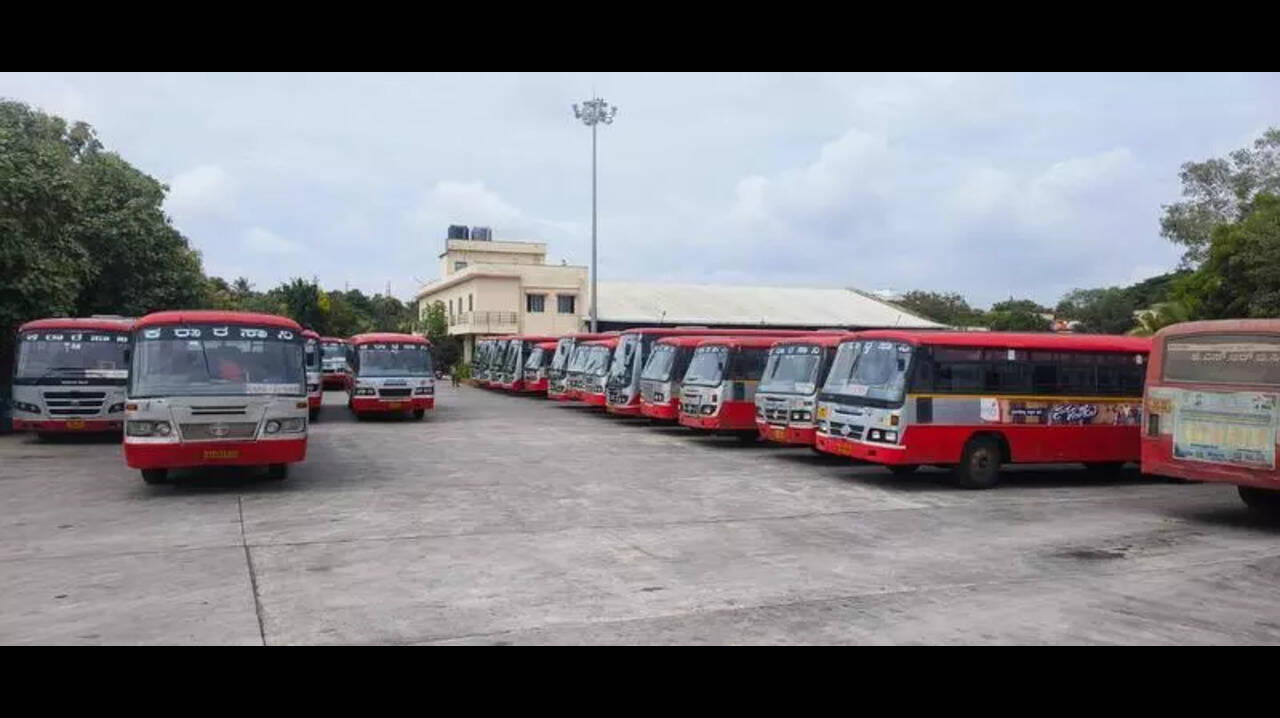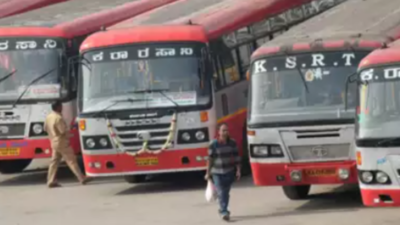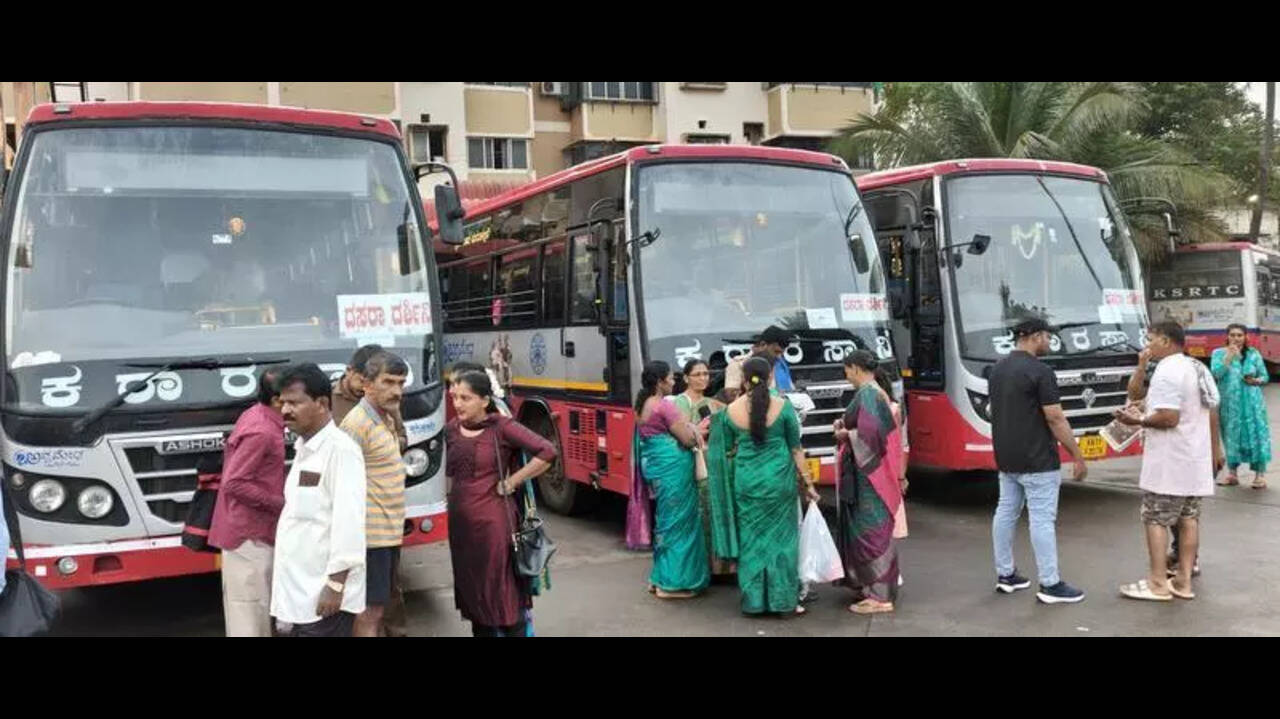The Karnataka State Road Transport Corporation (KSRTC) has once again proven its operational efficiency by managing an unprecedented surge of passengers during the Mysuru Dasara festivities. This year, the festival attracted record crowds, with thousands traveling from across Karnataka and neighboring states. KSRTC officials report that they operated additional buses, extended service hours, and implemented strategic scheduling to ensure smooth transit. The corporation’s effective management has drawn praise from passengers, local authorities, and the tourism department, highlighting its role in facilitating large-scale cultural events.
Background
Mysuru Dasara, celebrated annually as a cultural and religious spectacle, attracts tens of thousands of visitors over a 10-day period. The festival features the iconic Jamboo Savari procession, cultural programs, and decorated palaces, making Mysuru a major tourist hub during this time. KSRTC has historically played a crucial role in transporting visitors efficiently, balancing urban traffic challenges with the need for safe and timely movement of passengers. This year’s surge presented unique logistical challenges due to higher-than-expected attendance.
Stakeholder Views
Commuters lauded KSRTC for its timely and well-coordinated services, citing punctual departures, availability of additional buses, and dedicated staff assistance at major hubs. Local tourism officials noted that uninterrupted transit was vital for the overall festival experience, ensuring visitors could attend events without long delays. KSRTC management emphasized that extensive pre-festival planning, digital ticketing, and crowd management strategies were critical to handling the record passenger numbers.

Legal and Political Context
The Mysuru Dasara celebrations are closely monitored by local authorities to ensure compliance with public safety, transport regulations, and civic guidelines. KSRTC operations fall under the state transport department, which coordinates with police, municipal officials, and emergency services. Effective execution of transport logistics during the festival is a politically sensitive issue, as delays or mismanagement can lead to public criticism. This year, proactive planning helped avert such complications.
Operational Strategies
To accommodate the unprecedented demand, KSRTC deployed over 500 additional buses, including luxury and air-conditioned services for long-distance travelers. Routes were strategically mapped to minimize congestion, while temporary bus stands and ticket counters were set up at key points in Mysuru. Digital ticketing systems allowed passengers to book seats online, reducing queues and crowding. Coordination between drivers, conductors, and traffic authorities ensured smooth flow on both city and intercity routes.
Passenger and Community Impact
The enhanced transport system allowed visitors from Bengaluru, Mandya, and neighboring districts to reach Mysuru comfortably and on time. Commuters appreciated the seamless connectivity, particularly for those traveling with families or elderly passengers. Local vendors and tourism operators also benefitted, as improved transport accessibility facilitated higher footfall and increased revenue during the festival period. The initiative reinforced KSRTC’s reputation as a reliable public transport service.
Current Status
KSRTC reported handling over 1.2 lakh passengers during the peak festival days, surpassing previous records. Feedback mechanisms, including helplines and online grievance portals, allowed for real-time problem-solving. The corporation also monitored fuel and maintenance requirements proactively, ensuring that vehicle readiness did not disrupt service. Officials confirmed that the operation concluded smoothly with minimal delays or complaints.

KSRTC also collaborated closely with local hotels and tourist offices to coordinate arrival and departure times for out-of-town visitors. This planning minimized overcrowding at bus terminals and ensured that passengers could reach their accommodations promptly. Hotel staff and bus conductors exchanged real-time updates to manage peak-hour flows, creating a seamless travel experience for festival-goers.
Special services were introduced for differently-abled passengers and senior citizens. Priority seating, assistance for boarding and alighting, and accessible transport options were provided at major terminals. Volunteers were assigned to help these passengers navigate crowded areas, ensuring inclusivity and comfort, which received appreciation from families and advocacy groups focused on accessibility.
Traffic police noted that KSRTC’s strategic deployment helped reduce congestion in key festival zones. By designating bus-only lanes and optimizing stop points near Chamundi Hill and the Palace grounds, authorities managed to maintain orderly movement despite record crowds. The integration of transport planning with city traffic management proved critical to maintaining public safety during peak festival days.
The corporation also emphasized hygiene and sanitation on all buses. Regular cleaning schedules were implemented before and after each trip, with staff ensuring that public health standards were met. In light of previous years’ concerns about crowded vehicles, these measures reassured passengers and helped prevent the spread of illness during large gatherings.
Expert Opinions
Transport experts lauded KSRTC’s preparedness, noting that the corporation effectively combined traditional fleet management with modern digital tools. Advanced scheduling software, real-time passenger tracking, and efficient human resource deployment were cited as best practices. Analysts highlighted that public transport plays a critical role in large-scale events, and KSRTC’s performance this year could serve as a model for other state transport corporations during festivals and peak travel periods.
Timeline
Preparations for the festival began two months in advance, with route planning, vehicle inspections, staff training, and coordination meetings. Peak day deployments were executed based on predictive modeling of passenger demand. Daily post-event reviews helped identify operational bottlenecks and implement improvements in real time. KSRTC’s systematic approach ensured consistent service across all festival days.

Conclusion
The KSRTC’s successful management of the Mysuru Dasara passenger rush demonstrates its operational efficiency, strategic planning, and commitment to public service. By combining infrastructure upgrades, staff training, and technology-driven solutions, the corporation ensured that visitors could travel comfortably and safely. This achievement reinforces KSRTC’s pivotal role in supporting Karnataka’s cultural heritage while setting benchmarks for public transport excellence during large-scale events.
KSRTC officials highlighted that real-time monitoring of bus movements played a key role in maintaining efficiency. GPS tracking devices installed in buses allowed the control room to track vehicle locations, manage delays, and redirect services to overcrowded routes. This proactive approach ensured that passengers experienced minimal wait times even during peak hours, while traffic authorities were able to coordinate road management effectively.
The corporation also implemented staggered departure schedules to prevent bottlenecks at key bus terminals. Major hubs in Mysuru, including the Central Bus Stand and Vijayanagar areas, were equipped with temporary holding bays to facilitate organized boarding. Volunteers and staff were deployed to guide passengers, manage queues, and provide information about routes and schedules, significantly reducing confusion and congestion.
Special focus was placed on long-distance travelers coming from Bengaluru, Mandya, and Hassan. KSRTC introduced express and semi-luxury buses with reserved seating to handle higher passenger volumes. Comfort and safety were prioritized, with staff conducting routine checks on vehicle readiness, fuel levels, and sanitation facilities. Passengers traveling for Dasara events praised the convenience and timeliness of these services.
Ticketing operations were streamlined through digital platforms and mobile apps. Online booking allowed travelers to reserve seats in advance, minimizing the need for physical counters. The digital system also provided real-time updates on seat availability, bus schedules, and delays, giving passengers greater control and planning ability. Conductors were trained to assist with app-based ticket verification, ensuring smooth boarding processes.
Local commuters benefited from increased city bus services within Mysuru. KSRTC augmented regular routes to popular Dasara venues, including Chamundi Hill, Palace grounds, and Jamboo Savari locations. Additional shuttle buses operated frequently, providing affordable and reliable options for daily travelers and festival-goers alike. Traffic flow improved as reliance on private vehicles was reduced, easing road congestion.
Passenger safety was a priority during the festival rush. KSRTC coordinated with Mysuru traffic police to enforce road safety regulations, manage pedestrian zones, and monitor high-traffic intersections. Emergency response teams were stationed strategically to address any medical or vehicular incidents. First-aid kits and trained staff on buses further enhanced passenger security, ensuring that both local and outstation travelers could commute safely.
CSR and community engagement also played a role in festival logistics. Volunteers from local NGOs and cultural organizations assisted KSRTC staff in crowd management, guiding elderly and differently-abled passengers. These efforts complemented official measures and enhanced the overall passenger experience, highlighting the value of public-private collaboration during large-scale events.
The corporation’s maintenance teams worked round-the-clock to ensure vehicle readiness. Prior to the festival, every bus underwent thorough inspections, oil changes, tire checks, and sanitation measures. Maintenance depots were equipped to handle sudden breakdowns, and standby buses were on alert to replace vehicles as needed. This meticulous preparation minimized service disruptions even under record passenger loads.
KSRTC staff received special training in customer service, crowd management, and emergency handling. Workshops and mock drills were conducted to simulate peak festival scenarios, preparing personnel to respond efficiently to challenges. Staff morale and coordination improved as a result, with many reporting a sense of pride in successfully managing one of the largest public transport operations in the state.
Data collected during the festival indicated that KSRTC transported over 1.25 lakh passengers during the 10-day Dasara period. Peak day saw nearly 20,000 travelers moving in and out of Mysuru, highlighting the scale of operations. Officials emphasized that careful planning, route optimization, and digital ticketing collectively contributed to meeting these unprecedented demand levels without major incidents.
Feedback from passengers was overwhelmingly positive. Many appreciated the punctuality, cleanliness, and courteous behavior of KSRTC staff. Families traveling for the Jamboo Savari and cultural programs cited the convenience of pre-booked tickets and frequent bus availability. Outstation tourists expressed satisfaction with the safe and comfortable journeys, noting that KSRTC services enhanced their overall festival experience.
Finally, experts suggest that KSRTC’s performance during the Mysuru Dasara sets a benchmark for public transport management during large-scale cultural events. The corporation’s integration of technology, strategic planning, and human resources demonstrates that state-run transport agencies can successfully handle extraordinary passenger surges. The model provides insights for future events in Karnataka and across India.
Follow: Karnataka Government
Also read: Home | Channel 6 Network – Latest News, Breaking Updates: Politics, Business, Tech & More

